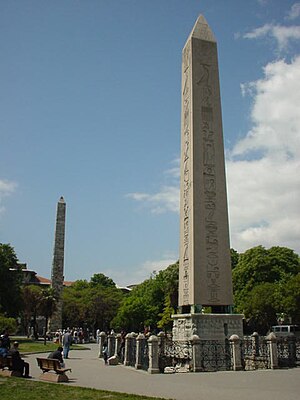Nika riots
| Nika riots | |
|---|---|
 |
|
| Date | 532 |
| Location | Constantinople |
| Causes | Conflict over chariot racing |
| Methods | Widespread rioting, property damage, murder |
The Nika riots (Greek: Στάσις τοῦ Νίκα Stásis toû Níka), or Nika revolt, was a revolt against Emperor Justinian I that took place over the course of a week in Constantinople in AD 532. It was the most violent riot in the history of Constantinople, with nearly half the city being burned or destroyed and tens of thousands of people killed.
The ancient Roman and Byzantine empires had well-developed associations, known as demes, which supported the different factions (or teams) under which competitors in certain sporting events took part; this was particularly true of chariot racing. There were initially four major factional teams of chariot racing, differentiated by the colour of the uniform in which they competed; the colours were also worn by their supporters. These were the Blues, the Greens, the Reds, and the Whites, although by the Byzantine era the only teams with any influence were the Blues and Greens. Emperor Justinian I was a supporter of the Blues.
The team associations had become a focus for various social and political issues for which the general Byzantine population lacked other forms of outlet. They combined aspects of street gangs and political parties, taking positions on current issues, notably theological problems or claimants to the throne. They frequently tried to affect the policy of the emperors by shouting political demands between races. The imperial forces and guards in the city could not keep order without the cooperation of the circus factions which were in turn backed by the aristocratic families of the city; these included some families who believed they had a more rightful claim to the throne than Justinian.
In 531 some members of the Blues and Greens had been arrested for murder in connection with deaths that occurred during rioting after a recent chariot race. Relatively limited riots were not unknown at chariot races, similar to the football hooliganism that occasionally erupts after association football matches in modern times. The murderers were to be hanged, and most of them were. But on January 10, 532, two of them, a Blue and a Green, escaped and were taking refuge in the sanctuary of a church surrounded by an angry mob.
...
Wikipedia
